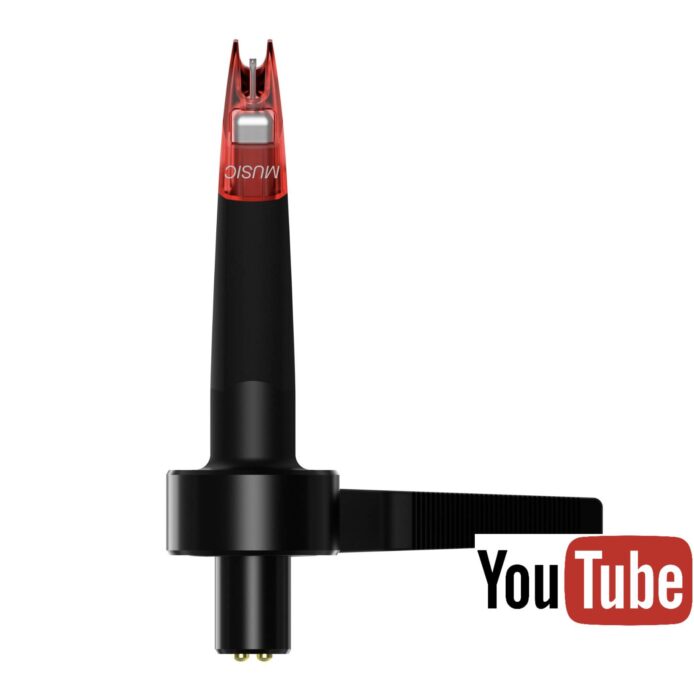The Article
POWERHAUS M6 FROM THE CHORD COMPANY
1st February 2024
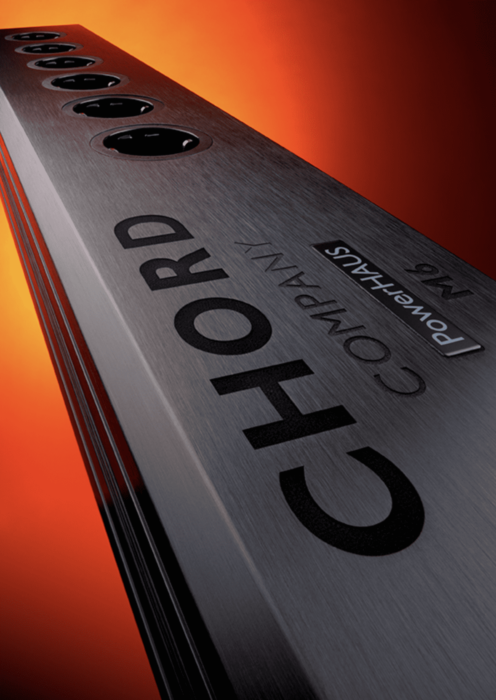
A high-end distribution block, hand-built in England and built like a tank. Paul Rigby takes aim…with a three-pin plug or two
It’s not a demure box, I have to say. This one is also aimed directly at purists.
The high-end, Chord Company PowerHAUS mains block takes a non-switched and filter-free design. You won’t even see power indicators in this block because of the possibility that these very same lights might generate noise. That decision alone makes me happy and gets a thumbs up from me.
Even the solid aluminium construction was chosen to reduce vibration and thus microphony.
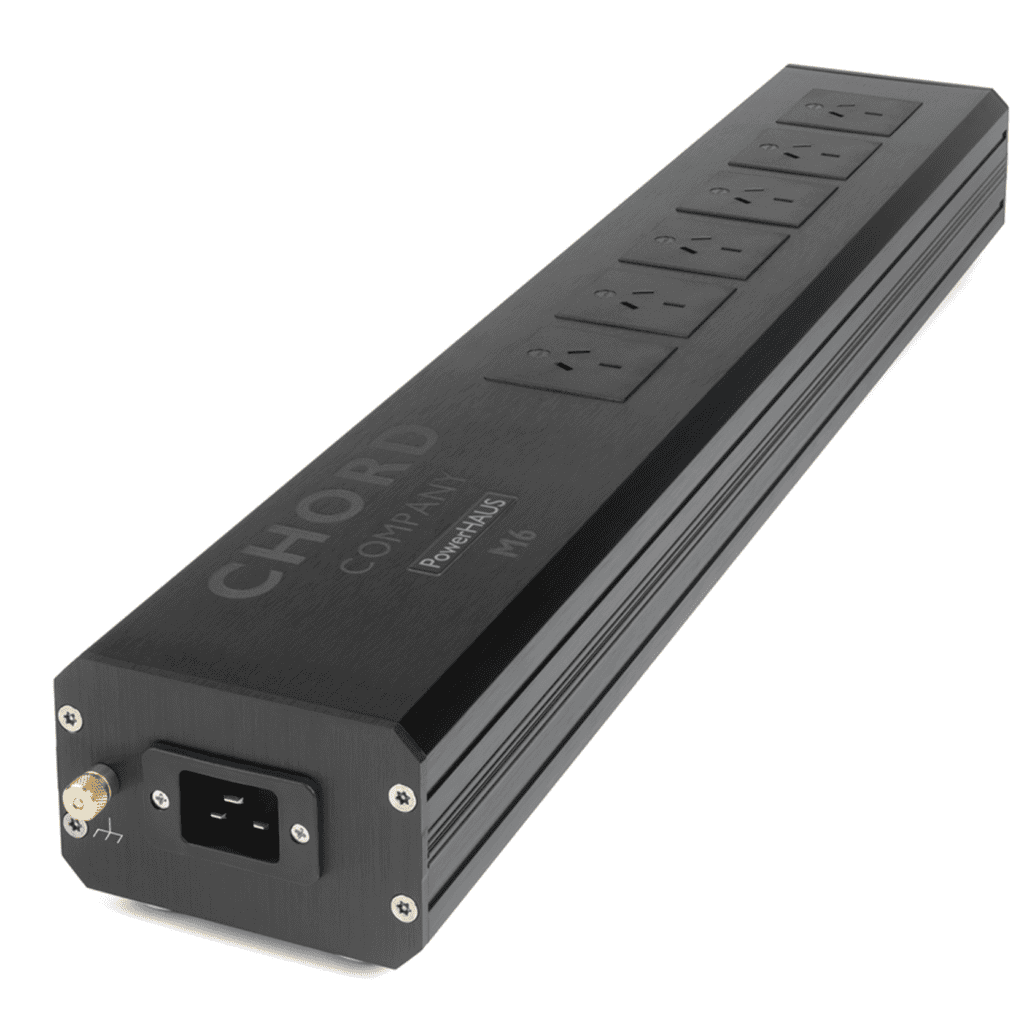
Inside, you will find heavy-gauge cables throughout, with meaty sockets affixed. This block is the company’s flagship offering which means that it includes three hybrid MainsARAYs fitted in parallel (rather than in series) to the bus bars, outside of the circuit and without the common HiFi technique of star wiring. Again, to reduce high-frequency noise.
The wiring itself oil the PowerHAUS is run along three isolated bus bars with the earth bar run distanced from the other two.
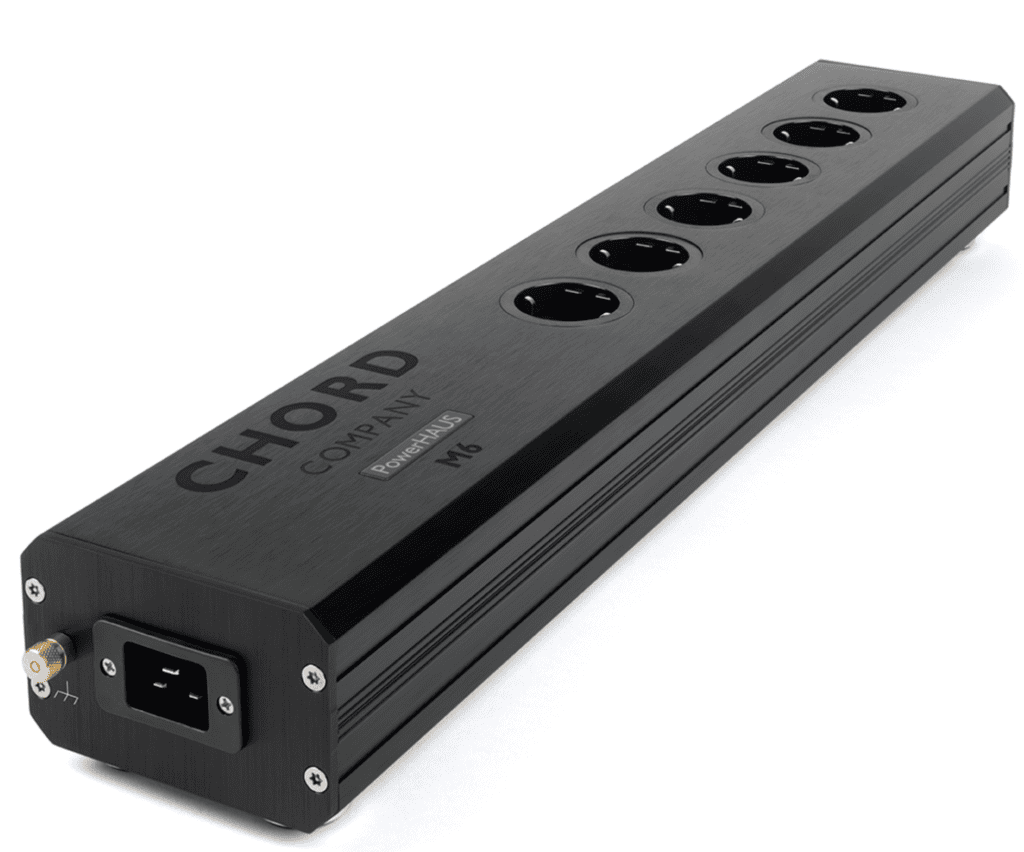
Spanning 600mm x 110mm x 77mm including the feet, this is a large, meaty, heavy and substantial unit that exudes confidence as soon as you unpack it.
SOUND QUALITY
To begin, I compared this high-end power block from Chord with a cheapo white power block that you might pick up on the High Street for a fiver.
This is an absurd comparison, is it not? Well ‘not’, I would venture. Why so? Because there are many people out there (and I have tripped over a few) who are firmly convinced that all HiFi power blocks are a scam, a sham and not worth a damn. That all you need is a basic hardware shop-type power block and you’re sorted and, if you are poor unfortunate to be ‘taken in’ by the moustache-twirling Dick Dastardlys out there, then more fool you, you need your head examining and on. And on.
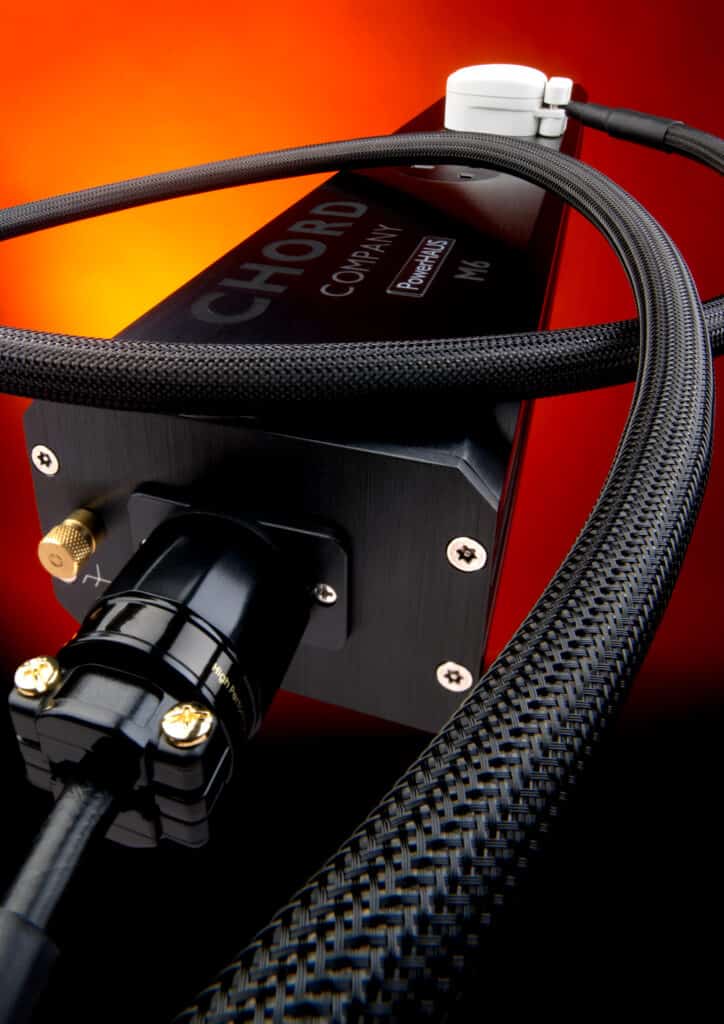
So ok then. I have an open mind about these things. I’m game. I plugged my Icon Audio PS3 Mk.II valve monoblocks into a white-van-man’s power brick and played Roy Wood’s 1979 album On The Road Again (with notable guests, Led Zep’s John Bonham and Renaissance songbird, Annie Haslam). I played the title track featuring a classic rock group guitar, bass, drums but also analogue synth, tambourine, sax plus some subtle backing harmony vocals. I chose this one because the mastering verges on the edgy so it is a challenge for any piece of HiFi equipment.
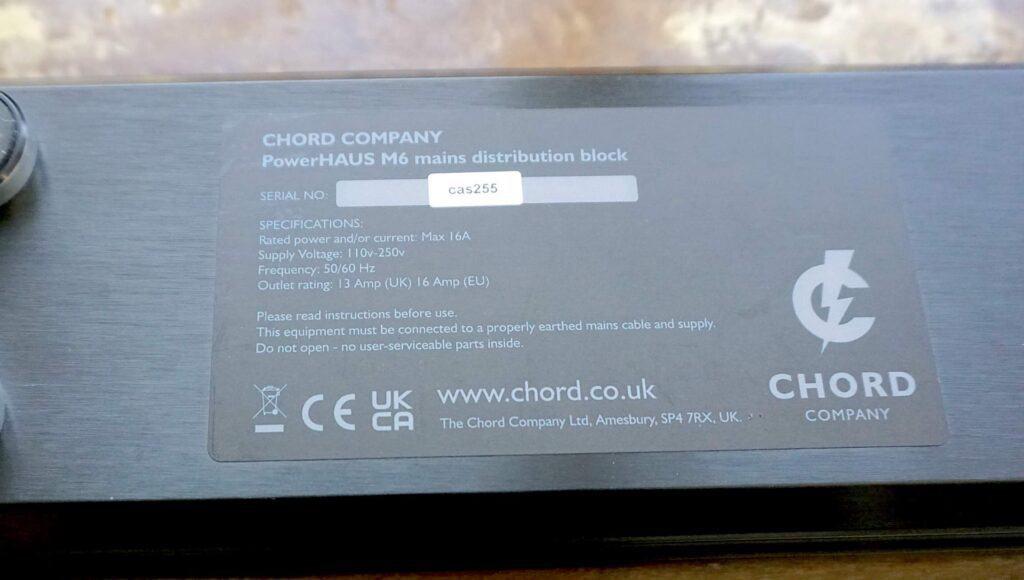
Now look, I was running my high-end HiFi system here. High-end Origin Live Sovereign turntable, Icon Audio valve mono blocks, Aesthetix pre-amp, £7k cartridge. The lot. So this music was never going to sound pathetic. And only the phono amp – on its lonesome – was on the white power brick. Everything else was running through quality bricks plus quality cabling, grounding accessories, isolation feet, high-end shelving, etc.
There was thus only one potential wrinkle amongst a sea of high-end wonder.
How did this track sound?
Put it this way, after 15 minutes of this at a pretty high volume? I had a headache. I’m not kidding. I had to take a break for a cup of tea.
This HiFi system? Costing many tens of thousands of pounds? Most of which was connected to quality components? Sounded poor. Very poor indeed. If I had heard this system ‘as is’, I would have dismissed it out of hand and moved on.
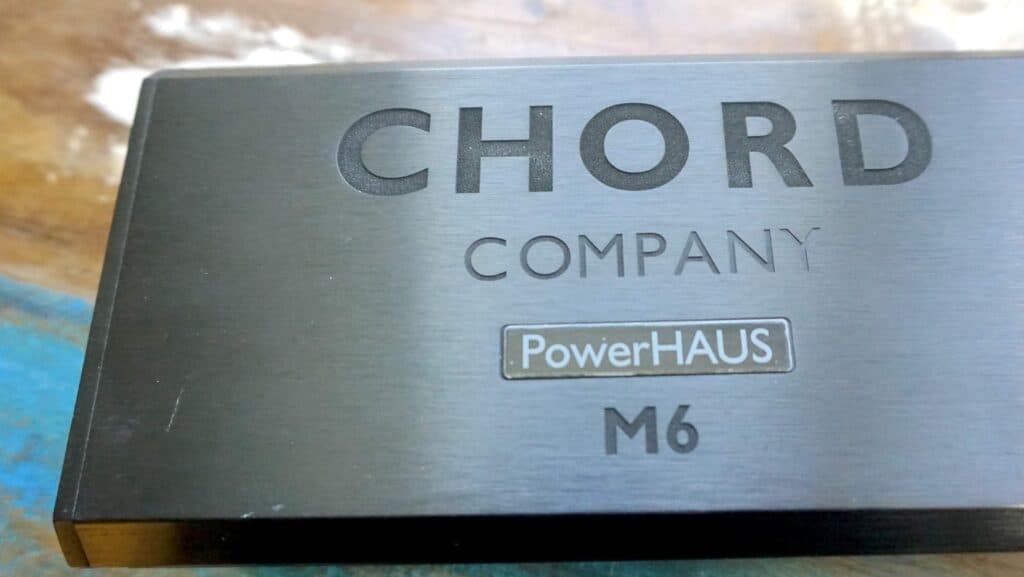
The most egregious aspect was the bright upper midrange and the treble which was so pinched and tizzy, I thought it was having a laugh. “Surely, Mr Treble, you cannot be serious.?” Oh, it was.
ONE OUT ALL OUT
At high volumes Wood’s vocal clipped into a nasty, listening fatigue zone, drums sounded like they were hitting the metal frame instead the central skin, the sax was a painful alarm buzz of the sort that sounds when you spot a U-Boat off the port bow. And as for the bass? No structure, boomy, muddy. Wrong.
The moral of this story? White power blocks are a sonic abomination. More importantly though is this, you only need to fail one part of your entire HiFi system to ruin everything. That is, I took but one component out of my previously harmonious chain and the entire HiFi system was up the creek.
So I replaced the white power block with the Chord PowerHAUS power block and this happened…Firstly, the high-frequency noise generated by the earlier white brick, dropped like a stone which meant that clarity around the midrange shot up, allowing a ton of detail to sprout forth. Spaces appeared in between instruments which meant that the ear could focus on each instrument now instead of trying to handle a muddy blob of noise. Backing harmony vocals no longer hurt the ears, the bass guitar was now easier to track while the tambourine provided fragile tinklings instead of painful ear stabs.
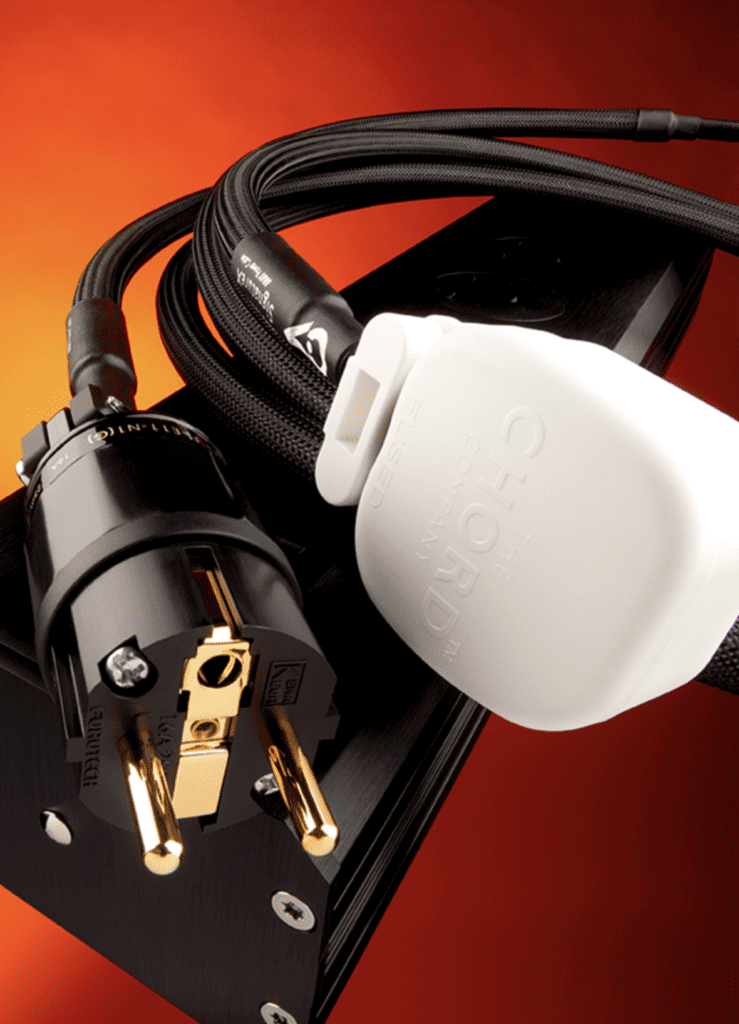
So let’s move on to more challenging fare, shall we? I decided to compare the Chord with my reference power block from Nordost, the similarly-priced Qbase QB6.
VS NORDOST REFERENCE
I moved to CD for this test and Bing Crosby’s Rediscovered – The Soundtrack. The soundtrack of a TV documentary on the man, that is, released in 2014. I played a live version of I Surrender Dear which in itself, was quite a challenge because the sonics were no longer controlled by the studio environment.
First impression? Well I had this effect during the white brick test too. Because of the reduction in high-frequency noise from the M6? The volume from the PowerHAUS – for a constant gain – shot up so I had to lower the gain on my pre-amp over 10 clicks to find the same sort of volume which was pretty dramatic.
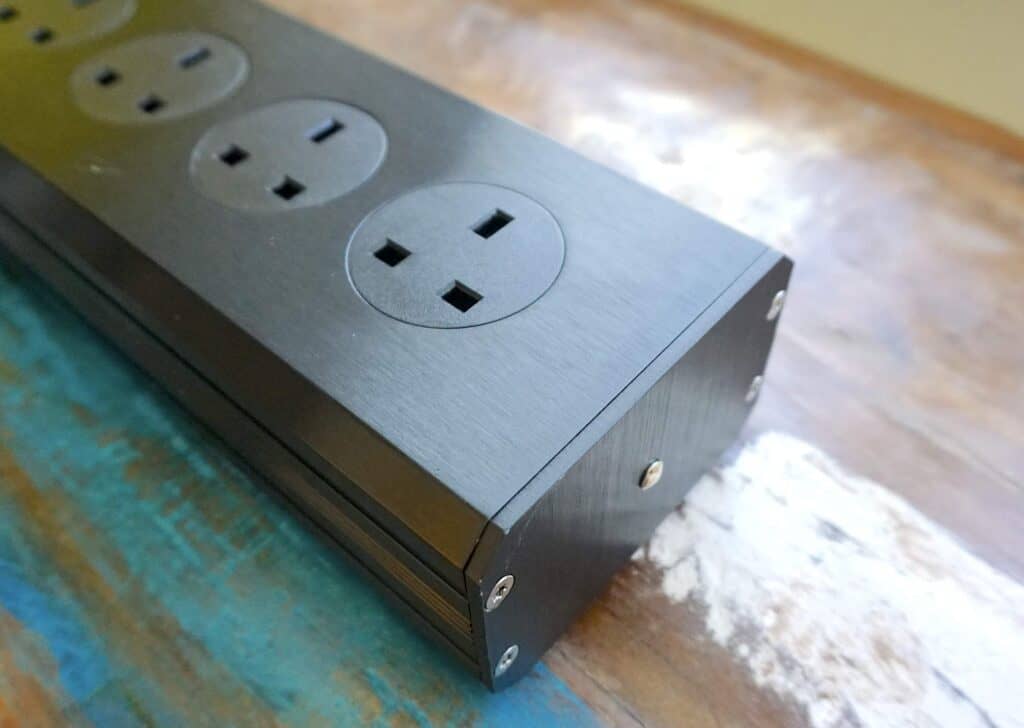
As a result? I did find the midrange to be smooth, incisive and detailed from the Chord with a great degree of tonal realism, especially around the orchestral strings backing Crosby. Speaking of Crosby, the man’s baritone offered a significant resonance offering notable contrasts between the highs and lows of his own delivery.
On a broad level, the soundstage offered a neutral and even-handed presentation. I quickly became confident listening to this track, realising that – via the Chord – I was in good hands.
vs TITAN EROS
My reference system utilises two principle power blocks. The Nordost handled the sources: turntable, DAC, CD transport and the like. So I moved to the other end, the power section run by the cheaper (£750) Titan Audio Eros power section and played the same Crosby track.
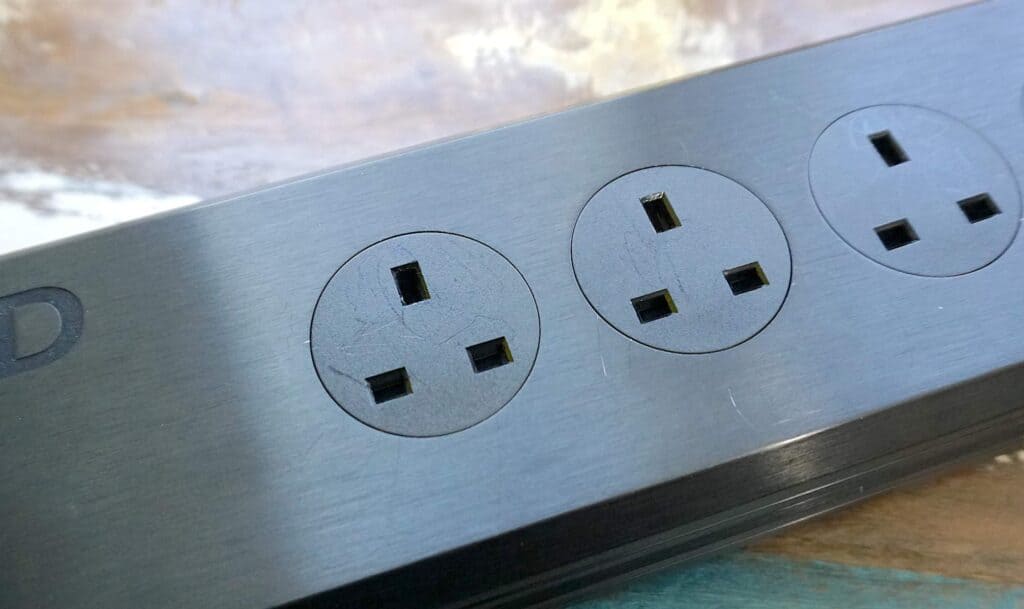
Covering only this lower frequency, power sections that included my power amplifiers and the power sections of my electrostatic speakers, I found the PowerHAUS hit lower regions round the bass frequencies. The Eros couldn’t reach as low nor could it move left and right once it was down there. What that gave the Eros was a leaner, nimble, faster moving bass response but that was only because less bass was available in the first place.
The Chord did reach further and lower giving more power and guts to the music and especially the Crosby baritone.
CONCLUSION
On the whole, the PowerHAUS M6 provided a broadly balanced and neutral output with smooth, detailed and intricate detail plus a strong bass output.
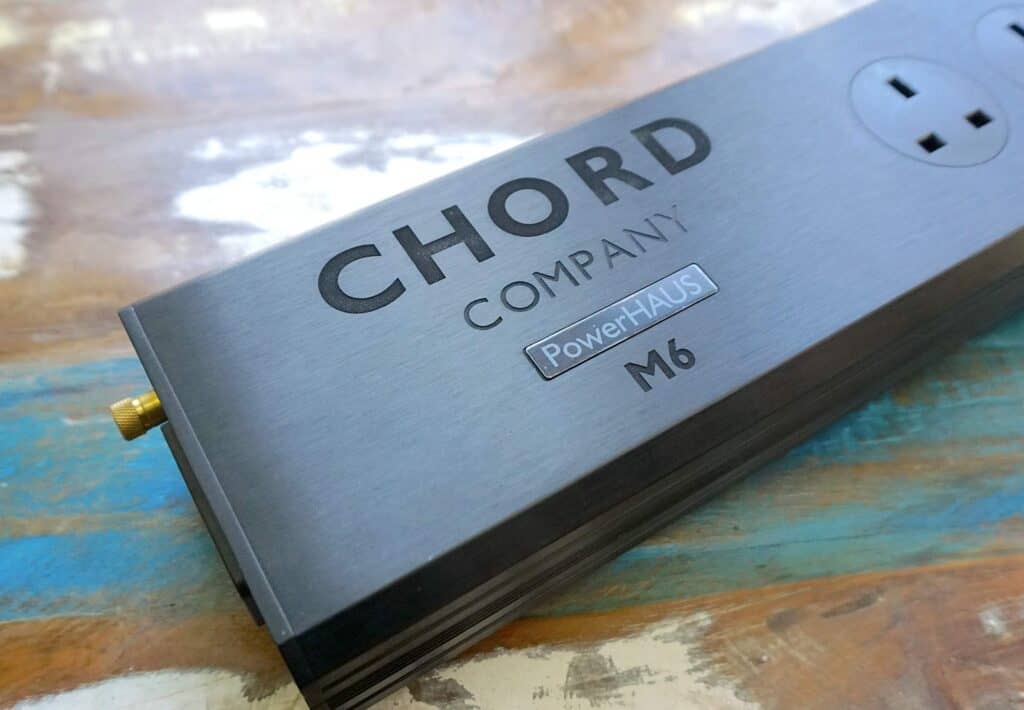
It also provided a superb power support providing low noise, a strong low frequency foundation and plenty of detail for the upper regions. I realise that this is a pricey item indeed and sure, you will need to have the budget to play with this one but really, if you have, for many of you? The Chord is all you will ever need in terms of power support.
CHORD PowerHAUS M6 DISTRIBUTION BLOCK
Price: £2,400
Website: chord.co.uk
GOOD: build quality, socket numbers, low noise, midrange detail, bass weight
BASS: could bass be a tad more nimble, perhaps?
RATING: 8
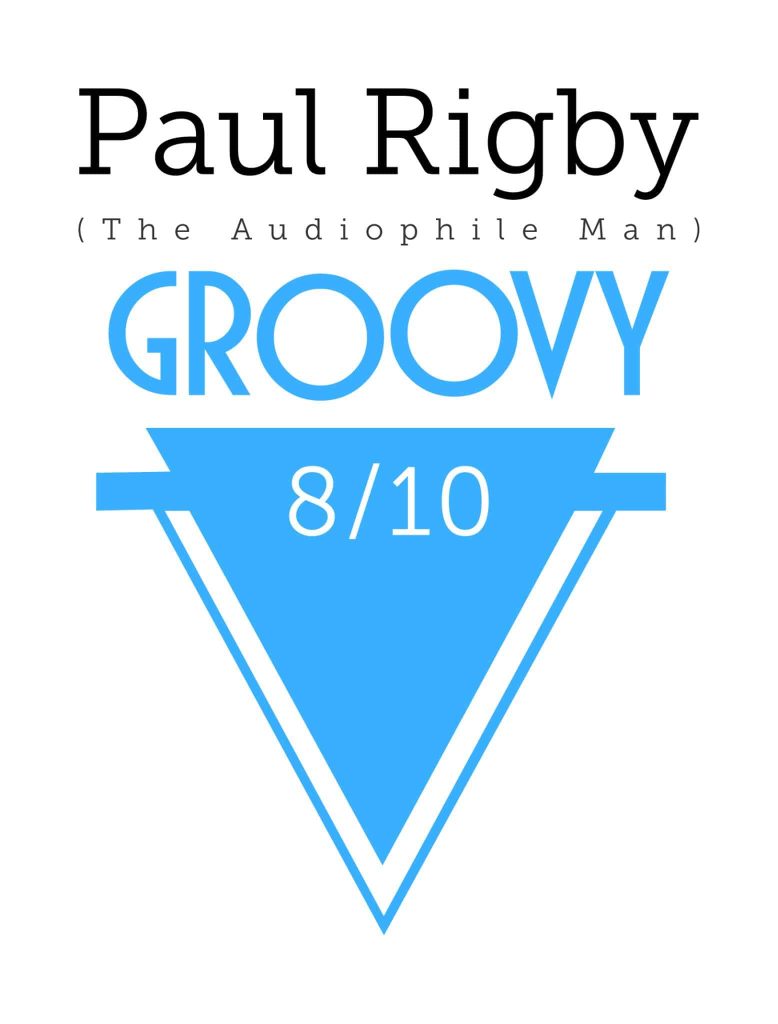
Don’t forget to check out my Patreon Page at www.patreon.com/audiophileman, for exclusive postings and more!]
REFERENCE
Origin Live Sovereign turntable
Origin Live Enterprise 12″ arm
Icon PS3 phono amplifier
Aesthetix Calypso pre-amp
Icon Audio MB845 Mk.II Monoblock Amplifiers
Blue Horizon Professional Rack System
Harmonic Resolution Systems Noise Reduction Components

